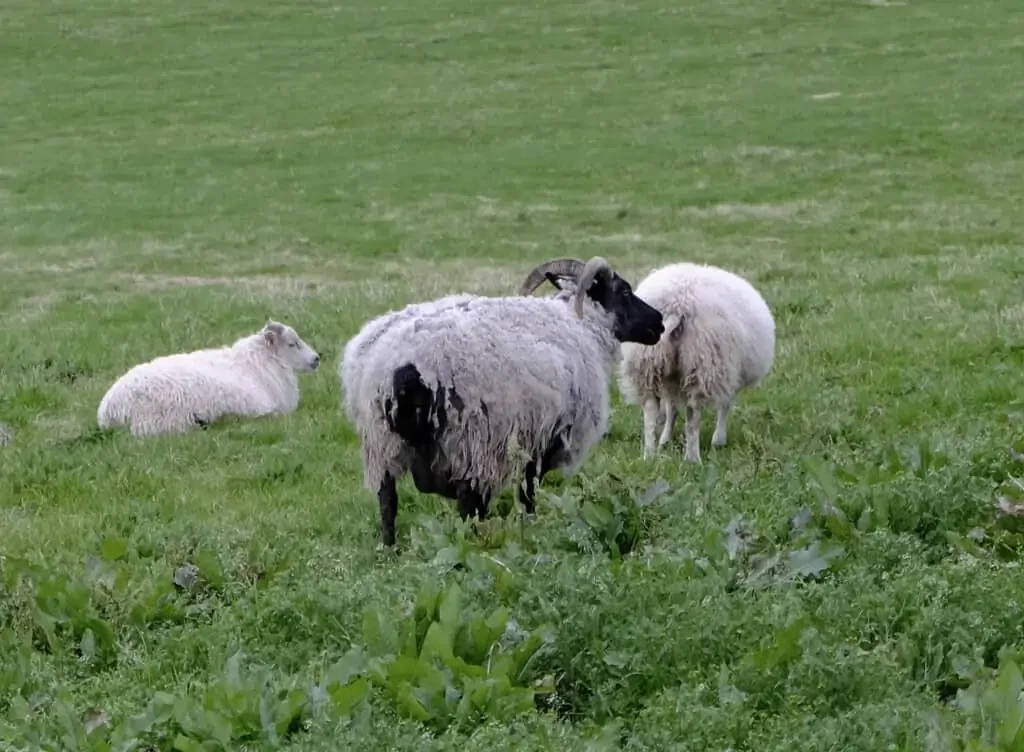Wool rhymes with gold (atleast in Danish). And there is a very good reason for that. Wool has so many good properties that really make a difference. It is a temperature-regulating material that keeps the body temperature – both summer and winter. It is sweat-wicking and then it is water-repellent. So far, so good.
But wool is not always gold. There is an extremely large difference in how the wool is made.
Conventional merino wool originates in most cases from Australia. Here the temperature is high and the sheep have been bred to deliver up to three times as much wool as ordinary organic sheep. The amount of wool and the Australian heat have consequences for the sheep. They attract parasites and blowflies. The latter lay eggs in the sheep's skin and the larvae of the flies feed on the sheep's tissue. It causes inflammatory conditions and in the worst case can cause death. A problem – naturally. The problem can be remedied by continuous monitoring and care or harsh insecticides. And unfortunately, the latter is almost always chosen. The chemical residues from this are left in the wool, which will subsequently be used in textile production – clothes for you and me.
That is one major consequence of conventionally reared sheep, the other is far, far worse. Because it is quite a common procedure to carry out mulesing to avoid parasite and fly attacks. When mulesing, sheep's skin is cut from the back end – without any kind of anesthesia. In many cases, the tail is also cut off and male animals are castrated at the same time. This leaves a large open wound.
The operation is of course extremely painful and the scar takes several weeks to heal again – with a high risk of infection in the intervening period. But this way the skin of the sheep becomes smooth and flies cannot lay eggs on it (at least not in that area).
Organic sheep in most cases live under completely different climates. Either in South America or in Europe. Here, the climate is completely different – and more naturally - and the sheep are not attacked by parasites and flies in the same way. If they do, the problem is remedied by monitoring and ongoing care.
Animal welfare is therefore, for me, a BIG thing to prioritize when buying wool. Also because conventional wool often undergoes a completely different treatment than organic wool. Because wool can scratch. And to avoid that, most conventional wool – at least for clothes – superwash treated. The treatment removes the natural lanolin with chlorine and straightens the wool fibers, which softens them. The treatment removes all the natural and good properties that wool has. What remains is softness and the possibility of countless trips in the washing machine.
In organic wool production, silk is used instead to soften the wool. It works super well – and all the wool's temperature-regulating and water-repellent properties are retained.
All this talk about conventional wool is crucial for me and for how I buy in my shop. Here you have to keep your tongue straight in your mouth. In many cases, wool is sold for its natural properties. And they are good – there is no doubt about that. But that does not make the wool organic, and that is my absolute first priority – for all the above reasons.
If you want to read more about mulesing and conventional sheep farming, read more here. But I have to warn against strong images.
If you knit, we have a large category with organic yarn from e.g. wool, mohair and linen. See all the delicious yarns here


